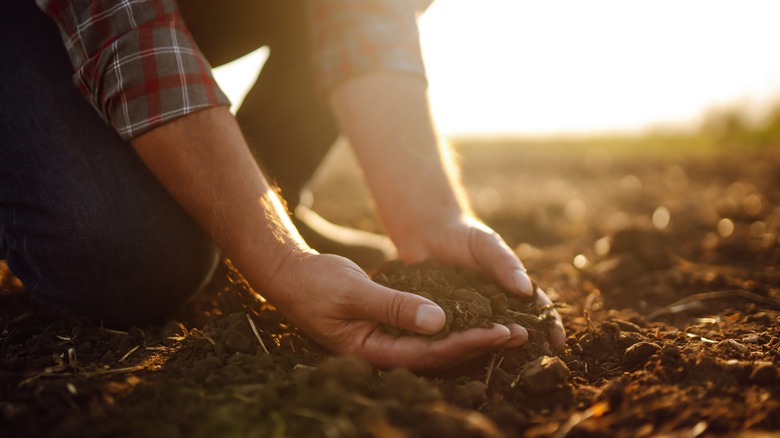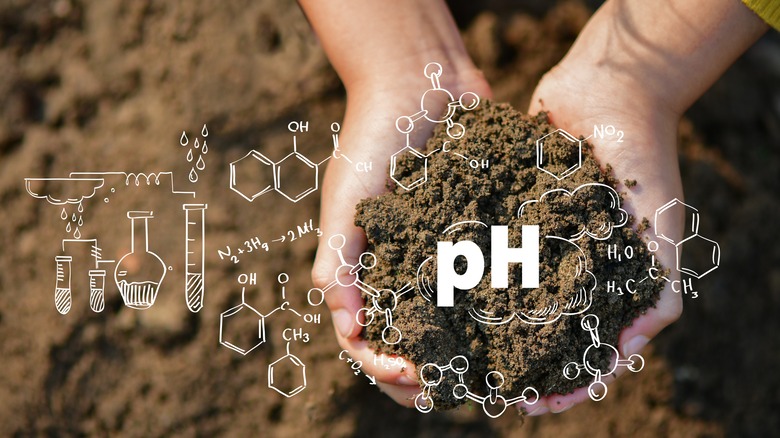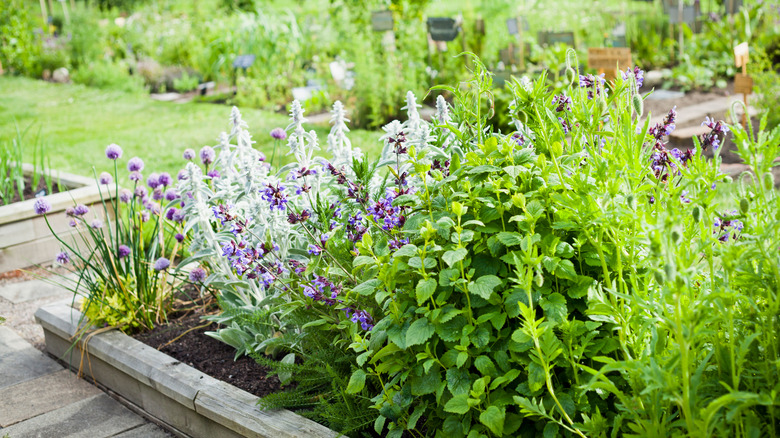Here's What You Need To Measure The pH Of Your Soil
Are you thinking about planting a garden this year, or perhaps you want to discover why your roses aren't blooming? The soil's pH level could provide a valuable clue and insight into what to do to improve your green thumb.
The pH scale, which goes from 0 to 14, measures the amount of hydrogen ions present in the soil. As the number of these ions grows, the soil's pH level falls, making it more acidic. When the soil is under a pH of 7, it's more acidic, while if it is over a pH of 7, it's more alkaline, expalins the SUNY College of Environmental Science and Forestry. Some plants grow better in more acid or alkaline conditions, making it quite important to know where your soil stands before you invest a lot of money into new plants.
The good news is that you can test your soil, but you need the right tools.
Test the pH without a kit
Many garden centers provide soil testing kits that can help provide a specific pH level for you. However, if you're more interested in doing it yourself, there are a few steps to take to tackle this, according to Growfully. You'll need a few things for the first one, including two non-reactive bowls made of either plastic or glass, ½ cup of distilled water in each bowl, and ½ cup of vinegar.
In this test, you need to take one cup of soil and separate it evenly into each bowl, then add ½ cup of distilled water to each dish. Stirring it, you should create a muddy slurry. Next, add the ½ cup of vinegar to the first bowl and watch what happens. The soil is likely above a 7 pH if any bubbling occurs, which means it's alkaline. The more fizz and bubbles, the higher that level is. Most of the time, plants do well in acidic soils, which means, in this case, you'll want to adjust your pH to better meet those needs.
What if you didn't get a reaction?
If you didn't get a reaction, try this second step from Growfully. You'll also need ½ cup of baking soda for this method. Place the baking soda into the second bowl of mud and then wait again for a reaction of the soil. In this situation, if you see fizzing or bubbling occur, the soil has a pH of under 7. Typically, if you see a small amount of bubbling, that's good news because it means the soil is slightly acidic, which many plants, mostly herbs or blooming varieties, thrive in.
If the combination of soil, water, and baking soda didn't stir a reaction, that means the soil is likely to be right around a pH of 7, which is neutral. In this case, you may want to fix the levels to create a more acidic pH environment for your plants. On the other hand, having your soil tested by a professional is often well worth it in all situations. They can then tell you the steps to adjusting the pH to a more appropriate level based on what you hope to grow.



